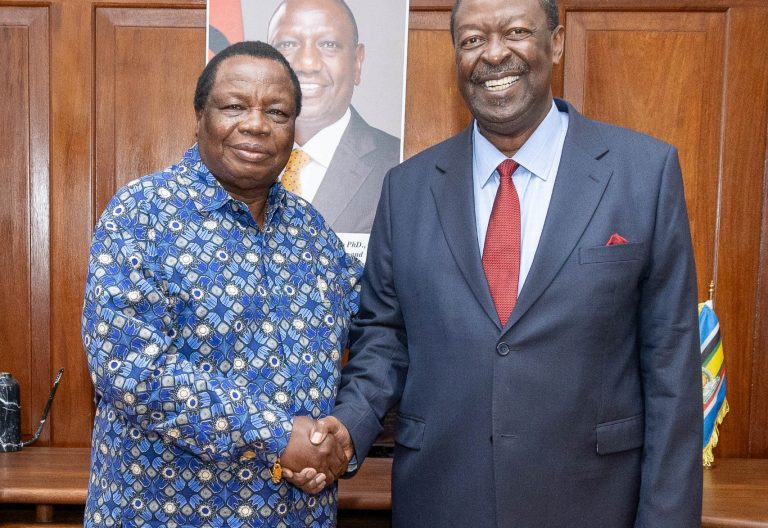How Sakaja plans to remove hawkers from Nairobi city

Nairobi Governor Johnson Sakaja (left) has started a plan that, if fully rolled out, will see vendors and hawkers removed from the city’s central business district and pushed to the alleys.
The city’s decongestion plans are in top gear, in line with the governor’s ambition of an orderly and working capital.
Already, the governor has constituted a multi sectoral team to find alternative slots for the traders.
The Sakaja administration said that on Wednesday, the multisectoral panel inspected various lanes and started demarcating them, as well as clearing dirt to make them conducive for trade.
“The county government has initiated the process of relocating informal traders from the CBD to the backstreets,” he said
“This morning, a multi-sectoral committee team inspected Turkana Lane near the Bus Station, which is undergoing paint works,” added Sakaja.
He said 10 lanes which will serve as prototypes in the decongestion plan will have new sheds and electricity connections to improve working conditions. Other areas earmarked as prototypes include Sotik, Turkana, Dubois, Posta and Kirinyaga lanes.
The governor said that though they are a business-friendly government, they want traders to flourish under the restraint of law and order.
Relocation of hawkers and street vendors by City Hall is not new.
It has been a thorny issue over the years, with drives by successive Nairobi administrations failing to bear fruit.
For example, in November 2017, then-governor Mike Sonko ordered that hawkers be relocated to Kariokor, specifically Mwariro market, but the plan came a cropper.
in Kariokor to be the permanent place to relocate hawkers who had invaded the CBD, posing a security challenge.
“My administration has a comprehensive plan to ensure hawkers’ interests are taken care of. As a long-term measure, my administration has identified Mwariro market to be transformed into a hawkers’ market,” Sonko said at the time.
Part of the Sonko relocation plan was to acquire the Kenya Planters Cooperative Union building situated along Haile Selassie Avenue and transform it into a hawkers’ market.
However, he said that the process would be progressive and phased out to ensure the traders did not suffer disruption and losses in their ventures. He was also to designate streets and streets and lanes where they can freely do their businesses without obstructing other people as well as other business owners.
But the drive of the populist former governor fell flat on its face, putting to question how far Sakaja is willing to go to ensure his approach works this time around.
Cat and mouse games between the hawkers and the city law enforcement are usual as the askaris seek to arrest them for trading in disallowed areas.
Francis Mwangi, who sells trousers in the CBD every evening, told the Star the move by the governor would result into losses in the businesses.
“It is the trader who goes looking for the customer, not the other way round. Putting us in the invisible backstreet will affect our business,” he said.










